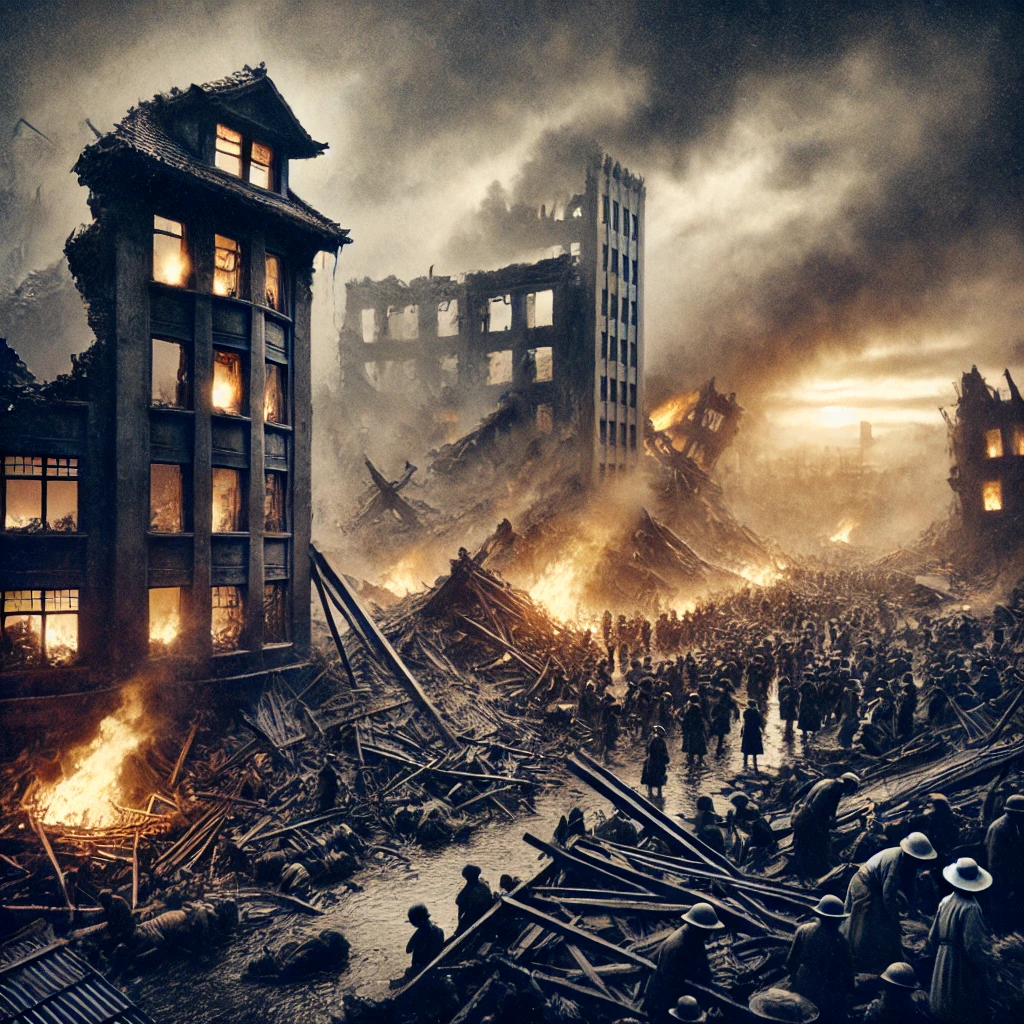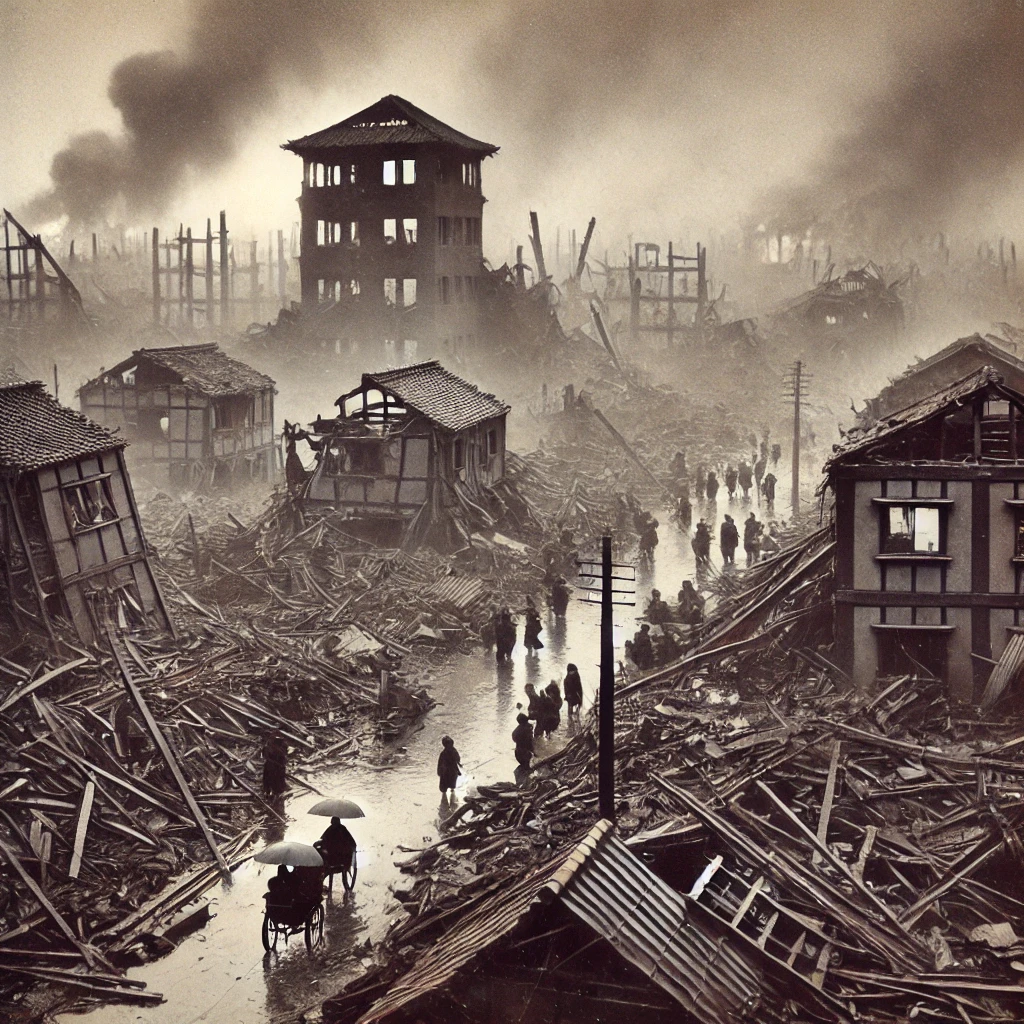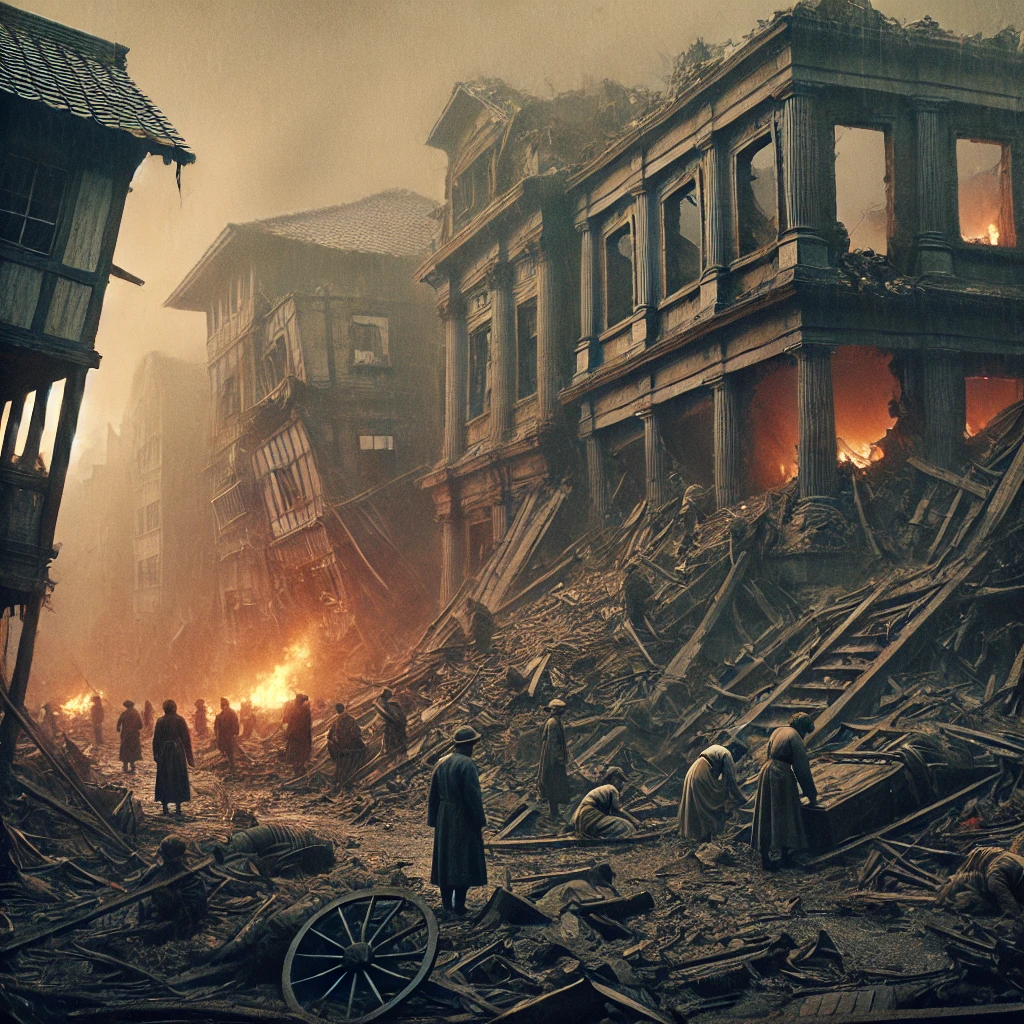On September 1, 1923, Japan was struck by the devastating Great Kanto Earthquake, one of the most catastrophic natural disasters in the country’s history. The earthquake, which hit the Kanto region, including Tokyo and Yokohama, resulted in the deaths of over 140,000 people and caused widespread destruction. The event remains a significant moment in Japan’s history, influencing disaster response, urban planning, and community resilience.
The earthquake struck at 11:58 a.m. local time with a magnitude of approximately 7.9 on the Richter scale. Its epicenter was located near the city of Yokohama, but its effects were felt across a vast area. The quake caused severe structural damage to buildings, roads, and infrastructure, including the destruction of large parts of Tokyo and Yokohama. In addition to the immediate impact, fires ignited by the earthquake ravaged the cities, compounding the destruction and leading to further casualties.

The Immediate Impact and Response
The immediate aftermath of the Great Kanto Earthquake was marked by chaos and widespread suffering. The destruction left hundreds of thousands homeless, and the fires that followed exacerbated the devastation. Rescue and recovery efforts were hampered by the scale of the disaster, and the Japanese government, along with international aid organizations, struggled to provide sufficient assistance to those affected.
In response to the disaster, Japan embarked on a massive rebuilding effort. The earthquake prompted significant changes in construction practices and urban planning, leading to improvements in building codes and disaster preparedness. The reconstruction process also led to the development of modern infrastructure and urban planning techniques aimed at mitigating the impact of future earthquakes.

Long-Term Effects and Lessons Learned
The Great Kanto Earthquake had profound and lasting effects on Japan’s society and economy. The disaster highlighted the need for improved disaster management and response systems. In the years following the quake, Japan implemented stringent building regulations and invested in earthquake research and technology. These measures have played a crucial role in enhancing the country’s resilience to future seismic events.
The legacy of the Great Kanto Earthquake extends beyond its immediate impact. The disaster prompted changes in public policy and emergency response strategies, shaping Japan’s approach to disaster preparedness and recovery. The memory of the quake serves as a reminder of the importance of resilience and readiness in the face of natural disasters.

Japan’s experience with the Great Kanto Earthquake underscores the need for ongoing vigilance and adaptation in disaster management. The lessons learned from the 1923 earthquake continue to influence how the country prepares for and responds to seismic events, ensuring that future generations are better equipped to handle the challenges posed by natural disasters. The earthquake remains a significant chapter in Japan’s history, reflecting both the resilience of its people and the evolution of its approach to disaster management.
